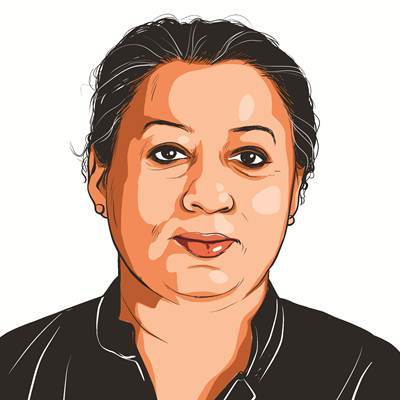Ritu Sarin is Executive Editor (News and Investigations) at The Indian Express group. Her areas of specialisation include internal security, money laundering and corruption. Sarin is one of India’s most renowned reporters and has a career in journalism of over four decades. She is a member of the International Consortium of Investigative Journalists (ICIJ) since 1999 and since early 2023, a member of its Board of Directors. She has also been a founder member of the ICIJ Network Committee (INC). She has, to begin with, alone, and later led teams which have worked on ICIJ’s Offshore Leaks, Swiss Leaks, the Pulitzer Prize winning Panama Papers, Paradise Papers, Implant Files, Fincen Files, Pandora Papers, the Uber Files and Deforestation Inc. She has conducted investigative journalism workshops and addressed investigative journalism conferences with a specialisation on collaborative journalism in several countries. ... Read More
PM takes corporates, antiques on trip
Prime Minister A.B. Vajpayee’s South-East Asian sojourn to Singapore and Cambodia is likely to witness some serious bilateral business ...

Prime Minister A.B. Vajpayee’s South-East Asian sojourn to Singapore and Cambodia is likely to witness some serious bilateral business taking off with the two countries.
In Singapore — being visited by an Indian Prime Minister after a gap of eight years — Vajpayee, trailed by a formidable business delegation, will address the Business Forum and deliver the Annual Singapore Lecture on India’s investment climate.
Since this is Vajpayee’s first foreign visit after the Gujarat riots, signals of any weakening of investor interest or his being quizzed on the communal conflagration by the NRI community will also be under scrutiny.
An agreement to be signed during the Singapore visit will see 11 antiques and around 950 microfilms on British rule being dispatched to the Asian Civilisation Museum.
Foreign office officials say while it was proposed that the antiques cargo be carried in Vajpayee’s plane itself, it was later decided that they be dispatched afterwards. This despite the fact that the PM is travelling to Singapore in a Boeing 747 and will catch an Airbus 320 to Cambodia.
The consignment of 11 antiques comprises three 12th century Vishnu, Sridevi and Bhudevi statues, a Hyderabad plate, two hookas and five 18th Century miniature paintings. The antiques will be on loan to the Asian Civilisation Museum for 10 years.
During his Cambodian trip, Vajpayee is likely to sign three important agreements. The first, for the restoration of the ancient Ta Prohm temples, will see teams from the ASI back in Cambodia after a decade since they had earlier been involved with conservation works in the Angkor Wat complex.
An agreement for facilitation of visas for Indian officials and diplomats is also in the offing as well as a significant Civil Aviation Agreement.
Though Cambodia maintained an ‘‘open skies’’ policy, Indian carriers are not landing at either Phnom Penh or Siem Reap. Once the agreement is signed in the PM’s presence, the onus will be on Indian carriers to study the viability of putting Angkor Wat on the tourist map for Indians.
Photos



- 01
- 02
- 03
- 04
- 05





























